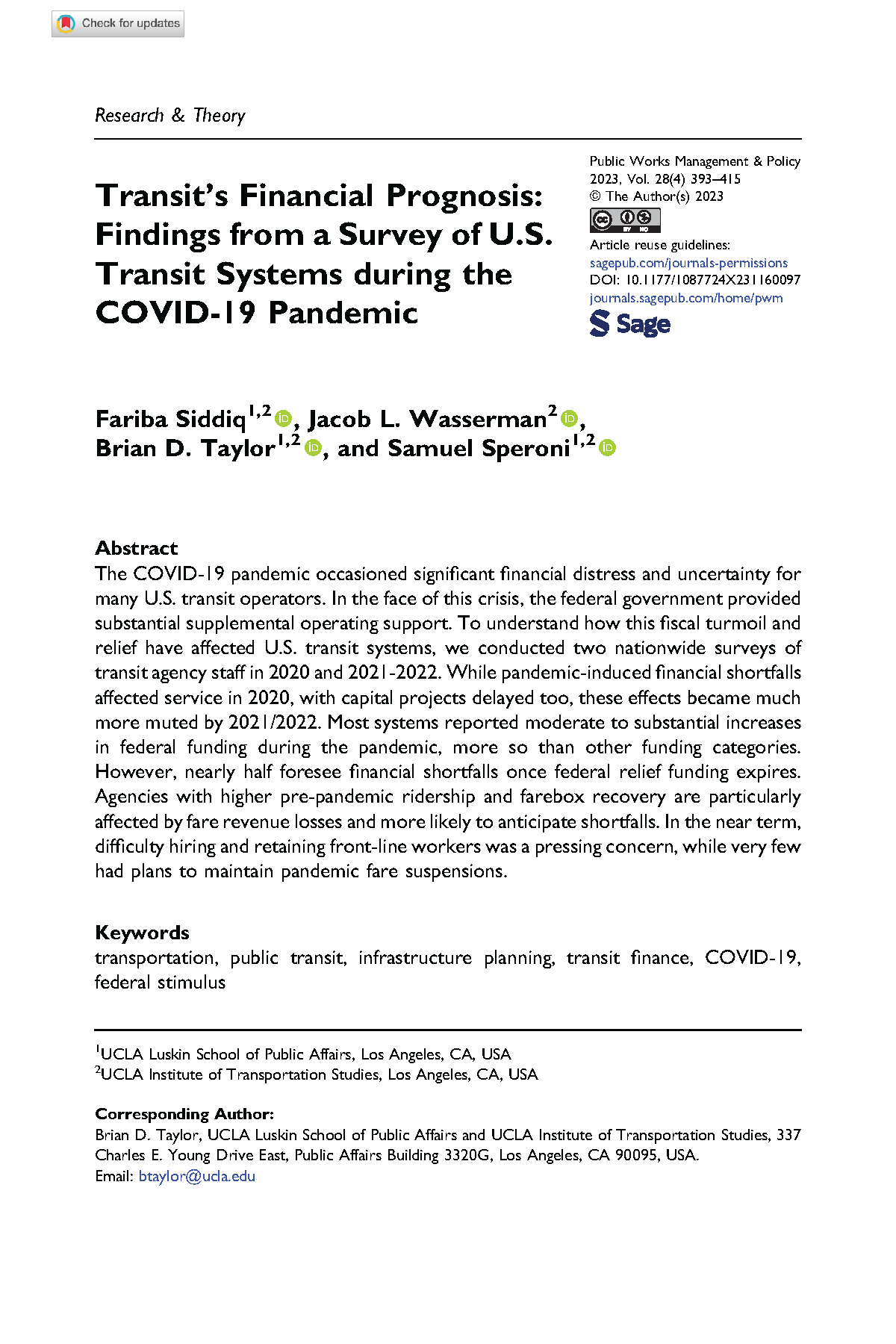Date: October 1, 2023
Author(s): Fariba Siddiq, Jacob L. Wasserman, Brian D. Taylor, Samuel Speroni
Abstract
The COVID-19 pandemic occasioned significant financial distress and uncertainty for many U.S. transit operators. In the face of this crisis, the federal government provided substantial supplemental operating support. To understand how this fiscal turmoil and relief have affected U.S. transit systems, we conducted two nationwide surveys of transit agency staff in 2020 and 2021-2022. While pandemic-induced financial shortfalls affected service in 2020, with capital projects delayed too, these effects became much more muted by 2021/2022. Most systems reported moderate to substantial increases in federal funding during the pandemic, more so than other funding categories. However, nearly half foresee financial shortfalls once federal relief funding expires. Agencies with higher pre-pandemic ridership and farebox recovery are particularly affected by fare revenue losses and more likely to anticipate shortfalls. In the near term, difficulty hiring and retaining front-line workers was a pressing concern, while very few had plans to maintain pandemic fare suspensions.
About the Project
This project reports on the recent past, present, and immediate future of public transit finance in California and Southern California in light of the impacts of the COVID-19 pandemic. Initially, the financial situation of transit operators in the state and the region appeared dire, with plummeting ridership and fares and rising subsidies and operating costs. However, the three enormous federal pandemic relief bills brought billions of dollars to California transit agencies and helped them weather the fiscal storm, until many of the state and local tax revenue sources on which the state’s transit agencies rely bounced back and more quickly than most forecasters initially predicted. Yet in 2023, many of the state’s transit systems are struggling operationally and financially. Ridership began eroding in the half-decade leading up to 2020. While the federal pandemic relief bills provided a critical lifeline to keep struggling transit systems afloat early on, these funds are running out. Meanwhile, operating costs have risen, ridership and fare revenues have only partially returned, and some transit systems face “fiscal cliffs,” where they will need substantial new infusions of funding, substantial cuts in costs and service, or some combination of the two. Against this backdrop, this project examines the current state of California transit finance: why ridership and fare revenues are down and their prospects for recovery; what lessons the successful federal relief bills provide; why commuter-oriented systems are struggling financially much more than those that primarily service transit-reliant riders; and what the financial managers at transit systems have done to cope with this turbulent time and how they see their future financial prospects.


